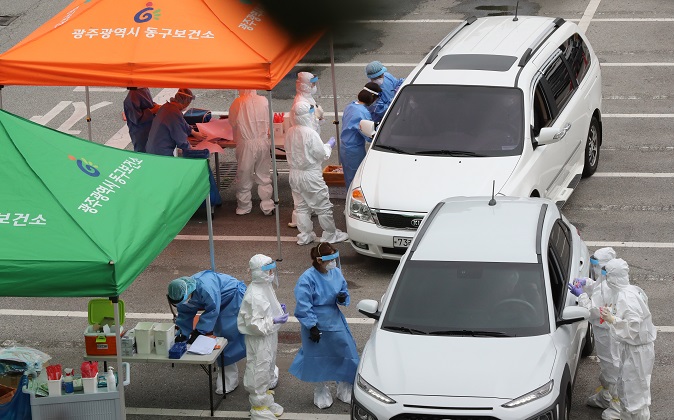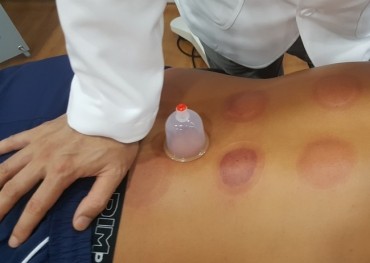
This photo, taken on July 6, 2020, shows drive-thru coronavirus testing in Gwangju, 329 kilometers south of Seoul. (Yonhap)
SEOUL, July 6 (Korea Bizwire) — A series of cluster infections in the Seoul metropolitan area, including the one tied to a nightlife district in downtown Seoul, was seeded most by the so-called GH genetic strain of the new coronavirus, which has been also most detected in other countries, health authorities said Monday.
The Korea Centers for Disease Control and Prevention (KCDC) sequenced genomes of a total of 526 COVID-19 patients, and the GH clade was detected in 333 cases.
More than 270 virus cases were tied to the nightlife district of Itaewon in early May, and at least 152 cases were traced to a logistics center just west of Seoul in mid-May.
The new coronavirus is classified into seven strains — S, V, L, G, GH, GR and the rest — in accordance with an amino acid, according to the GISAID database on the virus run by the World Health Organization.
South Korea has identified all but one clade — L.
The GH strain is believed to spread six times faster than other types of the virus.
The GH clade, which mutated from the S strain, proliferates well in cells and is more infectious, which may make it spread faster, KCDC Director Jeong Eun-kyeong said in a daily briefing.
The second-most-common coronavirus clade in South Korea was clade V, with 127 cases falling into the genetic strain. The cases were tied to a religious sect in Daegu, once the epicenter of the country’s virus outbreak in late February and early March.
According to the KCDC, 33 cases were grouped under clade S, most of which were imported cases, including arrivals from Wuhan, the Chinese city at the epicenter of the pandemic.
Nineteen cases were linked to the GR strain, with most traced to Russia-flagged ships docked in South Korea’s southeastern port city of Busan.
The KCDC added that the G strain was found in 10 imported cases.
After the first virus case was reported in late January, South Korea saw an explosive rise in virus cases, mostly tied to the religious sect in Daegu, until March.
The country relaxed tougher social distancing in early May as it had succeeded in flattening the virus curve with massive and swift testing.
But a series of cluster infections in Seoul and adjacent areas has begun to swell since then, accounting for most of the locally transmitted cases last month. The virus is currently spreading outside the greater capital area.
South Korea added 48 cases on Monday, including 24 local infections, raising the total caseload to 13,139, according to the KCDC.
(Yonhap)





